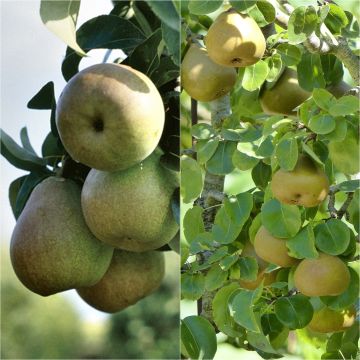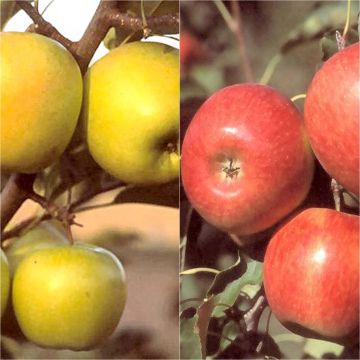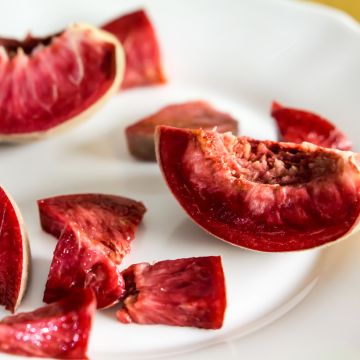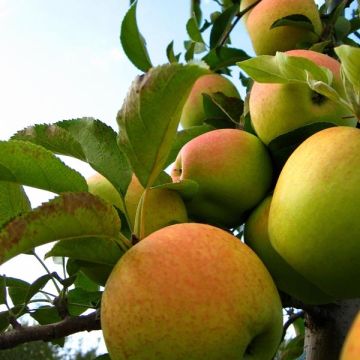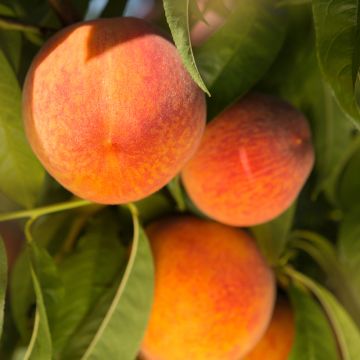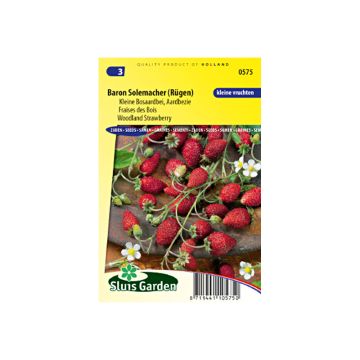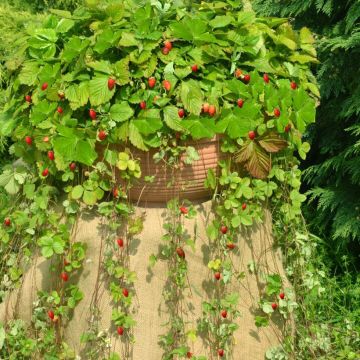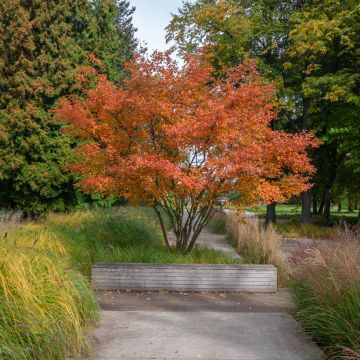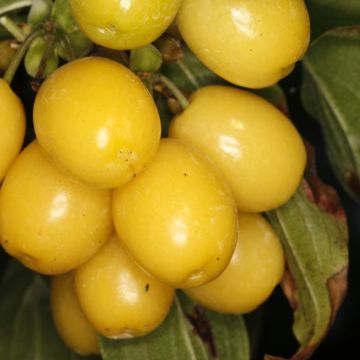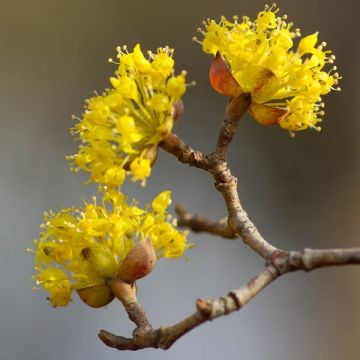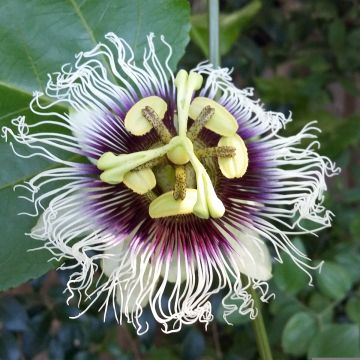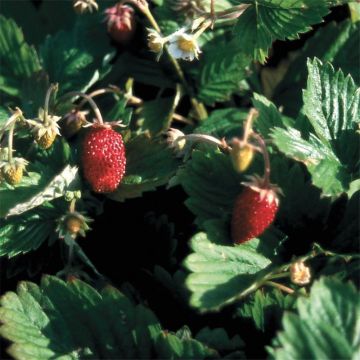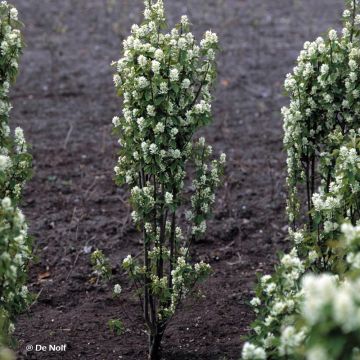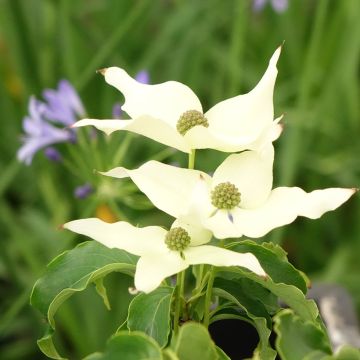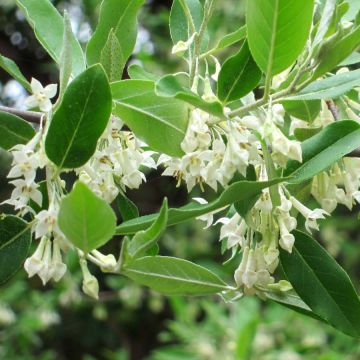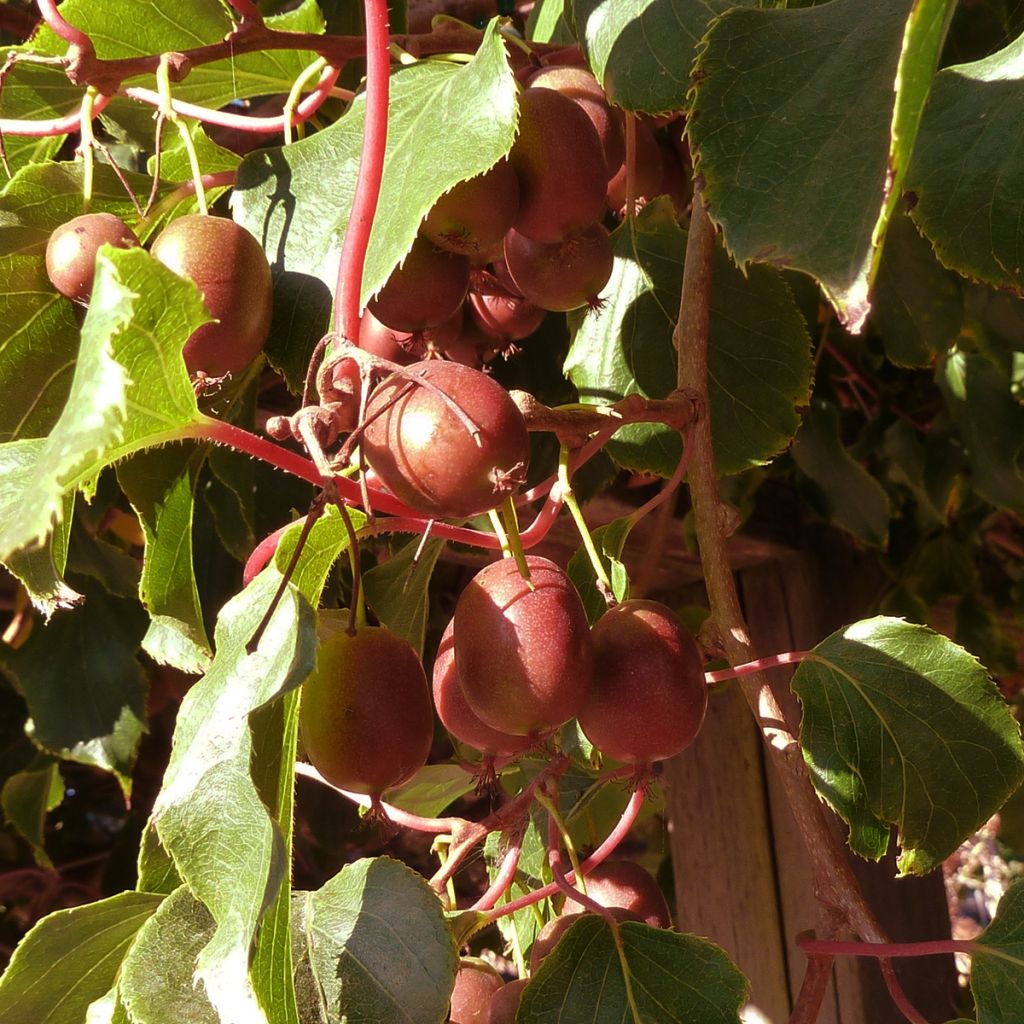

Hardy Red Jumbo (female) - Actinidia arguta
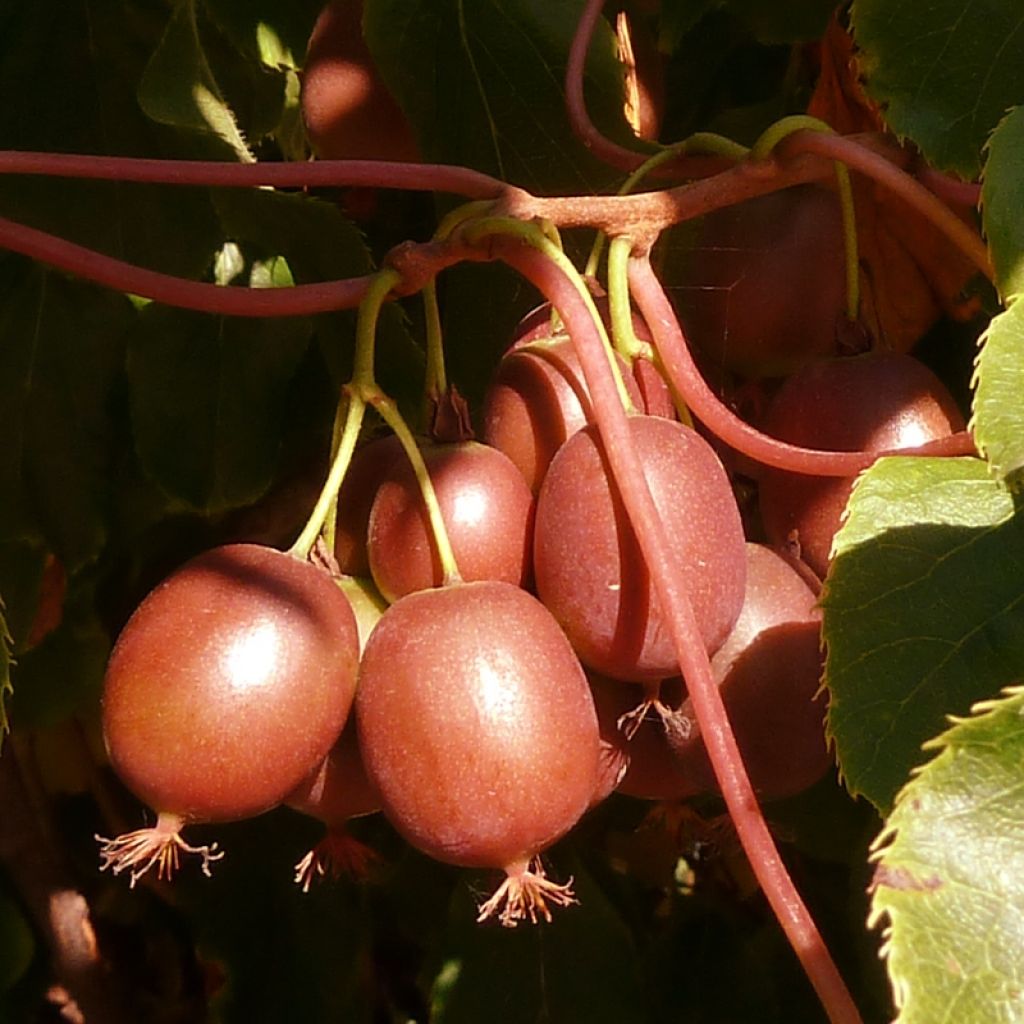

Hardy Red Jumbo (female) - Actinidia arguta
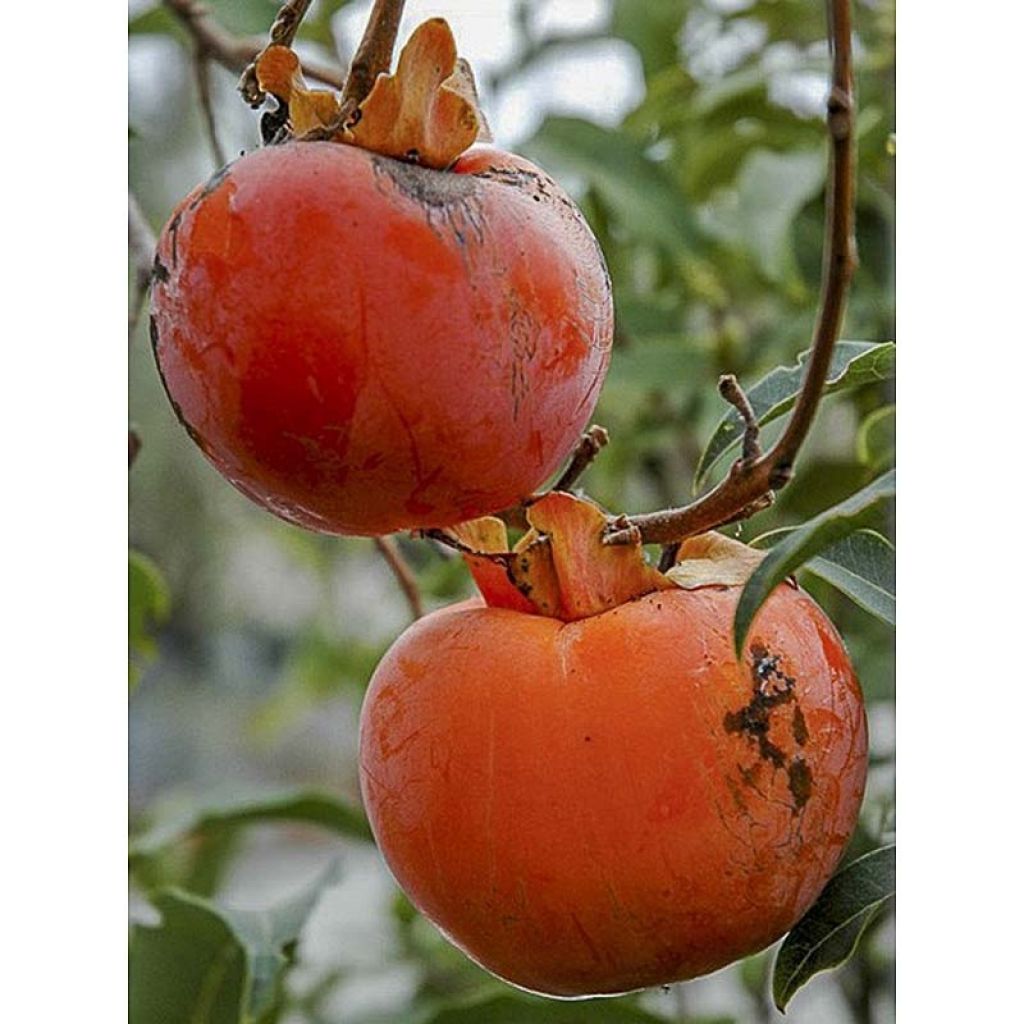

Hardy Red Jumbo (female) - Actinidia arguta
Hardy Red Jumbo (female) - Actinidia arguta
Actinidia arguta Red Jumbo®
Hardy Kiwi, Tara Vine, Kiwai, Kiwiberry, Grape Kiwi
Reçu en très bon état, plante saine de 30-40cm de hauteur. Les racines sont belles ´ je recommande
Maxime, 08/05/2022
This item cannot be shipped to the selected country
Delivery charge from €5.90
More information
Schedule delivery date,
and select date in basket
This plant carries a 6 months recovery warranty
More information
We guarantee the quality of our plants for a full growing cycle, and will replace at our expense any plant that fails to recover under normal climatic and planting conditions.
From €5.90 for pickup delivery and €6.90 for home delivery
Express home delivery from €8.90.
Description
The Kiwai Red Jumbo is a productive and early female cultivar of Siberian Kiwi, with beautiful red fruits that can be harvested as early as the end of September. Gathered in clusters, these small elongated fruits, weighing up to 9 grams, offer a delicious, fragrant flesh with a good balance of sweetness and acidity. To obtain fruits, the presence of a male plant such as Prince Jumbo nearby is necessary. The Kiwai or Siberian Kiwi, highly resistant to cold, is a cousin of the kiwi whose fruits, smaller and sweeter, can be consumed with the skin. It is a voluble climber that needs to be trained along a pergola, trellis, or arbor. It thrives in the sun, in rich, non-calcareous soil.
The Kiwai (Actinidia arguta) Red Jumbo, sometimes called Summer Kiwi, belongs to the Actinidiaceae family, just like its cousin the Kiwi (Actinidia chinensis or deliciosa). Originating from the Far East, it is a vigorous climber, reaching a height of 5 meters (16 feet). Its foliage is deciduous, falling in autumn and reappearing in spring. The Kiwai is very hardy, able to withstand temperatures as low as -20°C (-4°F). The stems bear large heart-shaped leaves, 8 to 10 cm (3 to 4in) long, with fine teeth ending in bristles. In early summer (June-July), fragrant and melliferous flowers appear, greenish-white in colour with purple anthers, grouped in threes in the axils of the leaves.
For female plants like Red Jumbo, flowering is followed by the formation of ovoid berries, smaller than kiwis (2 to 4 cm (1 to 2in) in diameter), with a smooth, thin skin. The taste of Kiwai resembles that of gooseberries. It is sweeter than the usual kiwi and richer in calcium and vitamin C. From the second or third year of planting, this variety will yield small fruits with red skin and flesh. Please note that this variety is not self-fertile. This is a female plant, requiring the presence of a nearby male plant such as Nostino, 'Prince Jumbo' or 'Romeo' for pollination. Like the kiwi, a male plant can pollinate several female plants.
The beauty of the Kiwai, both its foliage and its fragrant flowering, also make it a plant used for garden ornamentation. It is necessary to train this plant on a sturdy support, such as a wall with sturdy wires, a trellis, a pergola, a tree trunk, or a fence. This fruit is very popular with children because it can be picked and eaten as-is in the garden. Harvesting takes place from the end of September until October. The fruits can be easily stored in the refrigerator for about two weeks after harvest. Keep them separate from other fruits so they don't ripen too quickly. The flavor of Kiwai is well-suited for modern cuisine, enhances the aroma of fruit salads, and lends itself to the creation of sweet-savoury dishes.
Report an error about the product description
Hardy Red Jumbo (female) - Actinidia arguta in pictures
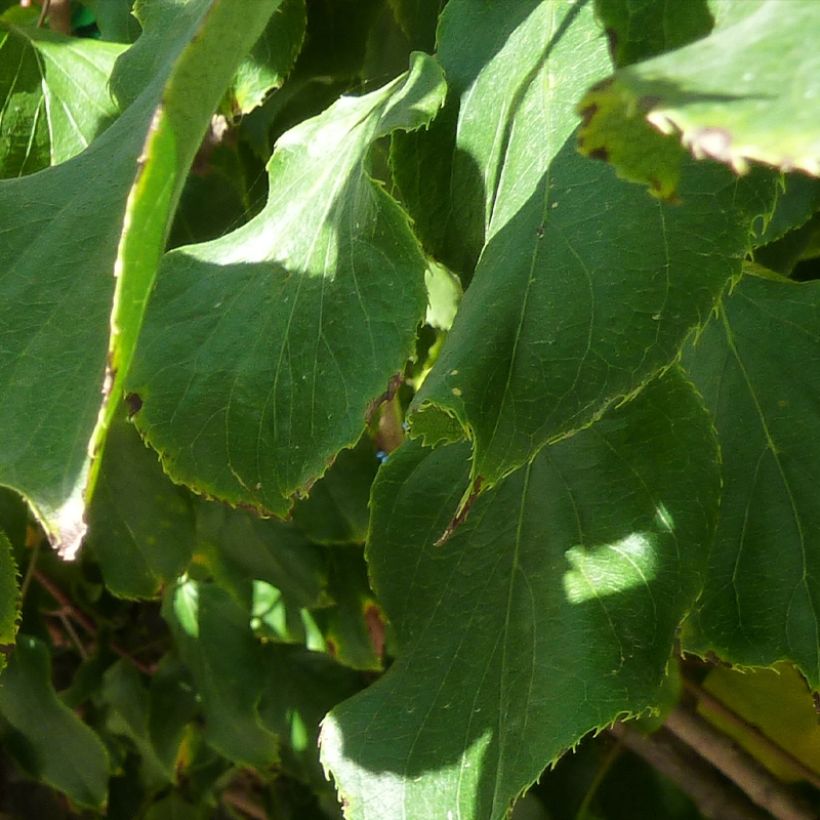

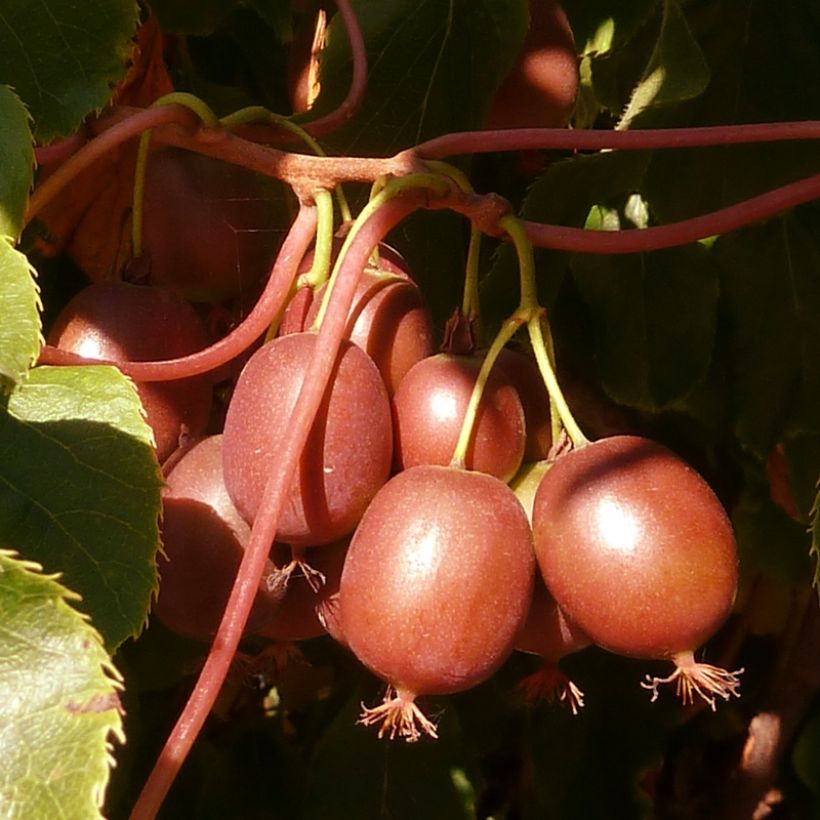

Plant habit
Fruit
Flowering
Foliage
Botanical data
Actinidia
arguta
Red Jumbo®
Actinidiaceae
Hardy Kiwi, Tara Vine, Kiwai, Kiwiberry, Grape Kiwi
Cultivar or hybrid
Other Fruit trees A to Z
Planting and care
Planting the Red Jumbo kiwai is preferably done in autumn, or in spring for regions with very cold winters. The Kiwai will be planted in a cool, rich, light and well-drained, non-calcareous soil. The plant fears stagnant humidity. Plant it in a sunny position sheltered from strong winds.
Space the plants 2 to 3 m apart. Dig a hole 50 cm (20in) in all directions. Spread a layer of gravel in the bottom and then a layer of soil mixed with turf. Lay the rootball diagonally and bring the stems upright along the support. Backfill with the same mixture. Provide support to help its voluble branches climb. Water with half a watering can. The Kiwai has trailing roots that develop horizontally under the surface of the soil. The soil should remain damp in summer, so it will be useful to mulch the base with a layer of 10 to 15 cm (4 to 6in). Mulching is doubly useful, as it prevents the germination of adventive plants and prevents water evaporation from the soil surface, reducing water requirements in summer.
This Kiwai requires little maintenance, simply provide regular watering. During periods of high heat, water it 1 to 2 times a week. Once established and rooted, the plant can manage on its own and becomes less water-hungry. Apply a fertilizer rich in crushed horn at the start of the growing season. A special fruit tree fertiliser will also be very beneficial during the flowering period.
Not very sensitive to insects and pests, Actinidia arguta can nevertheless be attacked by spider mites in a hot and dry environment. To eliminate them, lightly mist the foliage and the soil.
Planting period
Intended location
Care
-
, onOrder confirmed
Reply from on Promesse de fleurs
Berries
Haven't found what you were looking for?
Hardiness is the lowest winter temperature a plant can endure without suffering serious damage or even dying. However, hardiness is affected by location (a sheltered area, such as a patio), protection (winter cover) and soil type (hardiness is improved by well-drained soil).

Photo Sharing Terms & Conditions
In order to encourage gardeners to interact and share their experiences, Promesse de fleurs offers various media enabling content to be uploaded onto its Site - in particular via the ‘Photo sharing’ module.
The User agrees to refrain from:
- Posting any content that is illegal, prejudicial, insulting, racist, inciteful to hatred, revisionist, contrary to public decency, that infringes on privacy or on the privacy rights of third parties, in particular the publicity rights of persons and goods, intellectual property rights, or the right to privacy.
- Submitting content on behalf of a third party;
- Impersonate the identity of a third party and/or publish any personal information about a third party;
In general, the User undertakes to refrain from any unethical behaviour.
All Content (in particular text, comments, files, images, photos, videos, creative works, etc.), which may be subject to property or intellectual property rights, image or other private rights, shall remain the property of the User, subject to the limited rights granted by the terms of the licence granted by Promesse de fleurs as stated below. Users are at liberty to publish or not to publish such Content on the Site, notably via the ‘Photo Sharing’ facility, and accept that this Content shall be made public and freely accessible, notably on the Internet.
Users further acknowledge, undertake to have ,and guarantee that they hold all necessary rights and permissions to publish such material on the Site, in particular with regard to the legislation in force pertaining to any privacy, property, intellectual property, image, or contractual rights, or rights of any other nature. By publishing such Content on the Site, Users acknowledge accepting full liability as publishers of the Content within the meaning of the law, and grant Promesse de fleurs, free of charge, an inclusive, worldwide licence for the said Content for the entire duration of its publication, including all reproduction, representation, up/downloading, displaying, performing, transmission, and storage rights.
Users also grant permission for their name to be linked to the Content and accept that this link may not always be made available.
By engaging in posting material, Users consent to their Content becoming automatically accessible on the Internet, in particular on other sites and/or blogs and/or web pages of the Promesse de fleurs site, including in particular social pages and the Promesse de fleurs catalogue.
Users may secure the removal of entrusted content free of charge by issuing a simple request via our contact form.
The flowering period indicated on our website applies to countries and regions located in USDA zone 8 (France, the United Kingdom, Ireland, the Netherlands, etc.)
It will vary according to where you live:
- In zones 9 to 10 (Italy, Spain, Greece, etc.), flowering will occur about 2 to 4 weeks earlier.
- In zones 6 to 7 (Germany, Poland, Slovenia, and lower mountainous regions), flowering will be delayed by 2 to 3 weeks.
- In zone 5 (Central Europe, Scandinavia), blooming will be delayed by 3 to 5 weeks.
In temperate climates, pruning of spring-flowering shrubs (forsythia, spireas, etc.) should be done just after flowering.
Pruning of summer-flowering shrubs (Indian Lilac, Perovskia, etc.) can be done in winter or spring.
In cold regions as well as with frost-sensitive plants, avoid pruning too early when severe frosts may still occur.
The planting period indicated on our website applies to countries and regions located in USDA zone 8 (France, United Kingdom, Ireland, Netherlands).
It will vary according to where you live:
- In Mediterranean zones (Marseille, Madrid, Milan, etc.), autumn and winter are the best planting periods.
- In continental zones (Strasbourg, Munich, Vienna, etc.), delay planting by 2 to 3 weeks in spring and bring it forward by 2 to 4 weeks in autumn.
- In mountainous regions (the Alps, Pyrenees, Carpathians, etc.), it is best to plant in late spring (May-June) or late summer (August-September).
The harvesting period indicated on our website applies to countries and regions in USDA zone 8 (France, England, Ireland, the Netherlands).
In colder areas (Scandinavia, Poland, Austria...) fruit and vegetable harvests are likely to be delayed by 3-4 weeks.
In warmer areas (Italy, Spain, Greece, etc.), harvesting will probably take place earlier, depending on weather conditions.
The sowing periods indicated on our website apply to countries and regions within USDA Zone 8 (France, UK, Ireland, Netherlands).
In colder areas (Scandinavia, Poland, Austria...), delay any outdoor sowing by 3-4 weeks, or sow under glass.
In warmer climes (Italy, Spain, Greece, etc.), bring outdoor sowing forward by a few weeks.

































